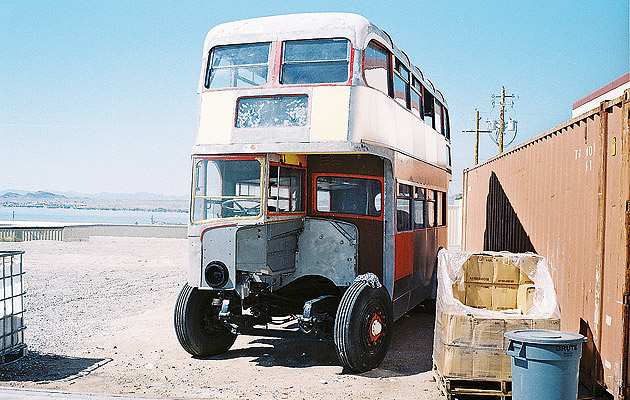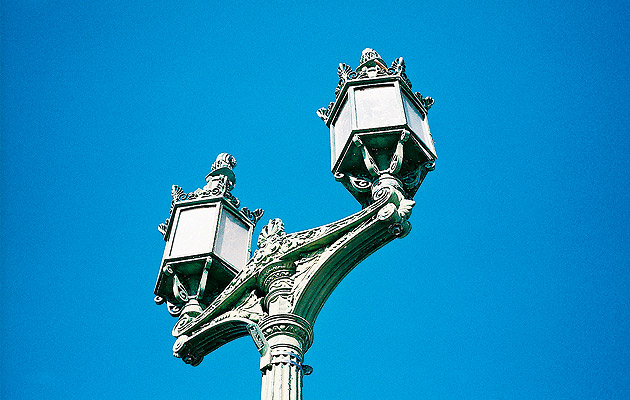|
Other items in McCulloch’s London collection (image: Travis Elborough) |
||
|
The fantastical, but true, tale of a bridge’s journey across the Atlantic reminds us of the strength of symbolism, says Charles Holland London Bridge is falling down, goes the nursery rhyme. Well it isn’t. It’s still upright, albeit now spanning one end of Lake Havasu in the Arizona desert. Cultural historian Travis Elborough’s book London Bridge in America tells the story of how it got there. At its simplest, it is a book about the differences between Britain and the US, the old world and the new. But it is also a story about the objects we design and what they mean to us. Elborough’s previous books – on the LP, the London Routemaster bus and the British seaside – describe the point at which an object or a place becomes functionally obsolete but culturally valuable: when they are no longer necessary but have acquired a new, niche level of popular affection. London Bridge fits this category, too – both in the sense that, by the time it was sold in the late 1960s, it was no longer seen as fit for purpose, and, that its current role is almost completely pointless. The difference is that London Bridge upped sticks and started a new life on the other side of the ocean. The story goes like this. London Bridge was the first point of crossing of the Thames. It was originally built by the Romans, ignored by the Saxons and ransacked by King Canute. It has had many different incarnations and designs, both real and imagined – including, remarkably, one by Thomas “Rights of Man” Paine. Perhaps the most famous was the medieval version designed by Peter de Colechurch, which was populated by houses. This version, much altered, was finally demolished in the 1820s to make way for a new design by George Rennie. It was Rennie’s bridge that the City of London Corporation decided to flog to the highest bidder. Step forward Robert P McCulloch, an American oil tycoon and chainsaw salesman with a dream of building a new city in the Mojave Desert. McCulloch had begun to create his improbable utopia by constructing a recreational lake and importing 11,000 palm trees from California. A bridge particularly a world-famous, historic bridge – would top it off nicely. So he bought it and had it shipped halfway across the world. In moving from the City of London to Lake Havasu City, Arizona, London Bridge became literally a floating signifier – the “sign” of a bridge rather than an actual one. So this is also a story about displacement and the journey of an object, not just physically but symbolically. What McCulloch had bought was not London Bridge exactly, but the stones that faced it. He had to build a new bridge and then clad it with his carefully itemised collection of historic rubble. In London, the bridge marked an implacable geographic fact: the need to cross a very large river. In America it spanned only over some sand and an abstract idea. Its existing span dictated the width of the waterway that passed for (mostly) decorative effect through its arches. Photographs of it under construction in the desert are bizarre, making it appear like a crude collage, grafted on to an unlikely background. Elborough tells this whole strange story well, populating it with a cast of oddballs, cheats and chancers, not least among whom one would have to include the City of London Corporation itself. He also debunks the persistent myth that McCulloch had intended to buy Tower Bridge, although he concedes that the underwhelming nature of Rennie’s bridge may have fuelled this story. Any disappointment is surely allayed though by the other artefacts collected in McCulloch’s strange corner of Arizona that is forever England – notably, a K2 phone box, a gypsy caravan and a replica of the Tardis. And what of its replacement? The current London Bridge – Harold King’s municipal box-girder design – is, for most people, almost entirely unmemorable. In its formative sketches, King anticipated high-level pedestrian walkways spanning over the cars below. These, sadly, were never built, leaving us with a bridge that is perhaps the exact opposite of the one currently in Lake Havasu City; a highly functional object of little symbolic value. |
Words Charles Holland |
|
|
||
|
Other items in McCulloch’s London collection (image: Travis Elborough) London Bridge in America: The Tall Story of a Transatlantic Crossing by Travis Elborough, Jonathan Cape, £14.99 |
||


















